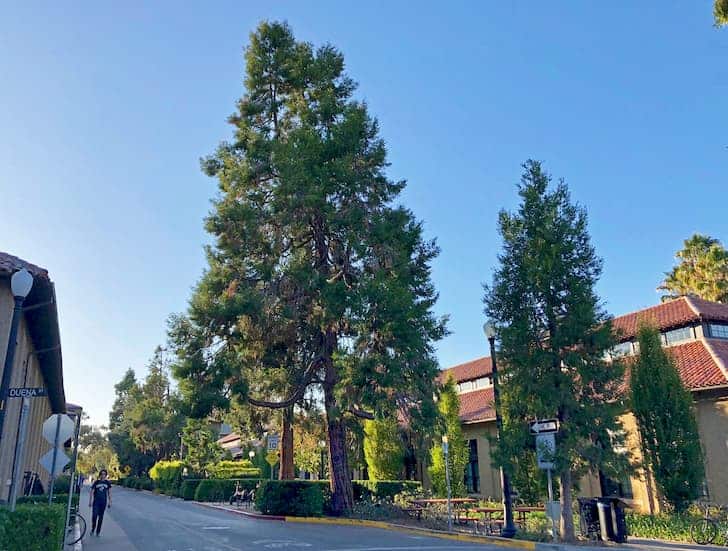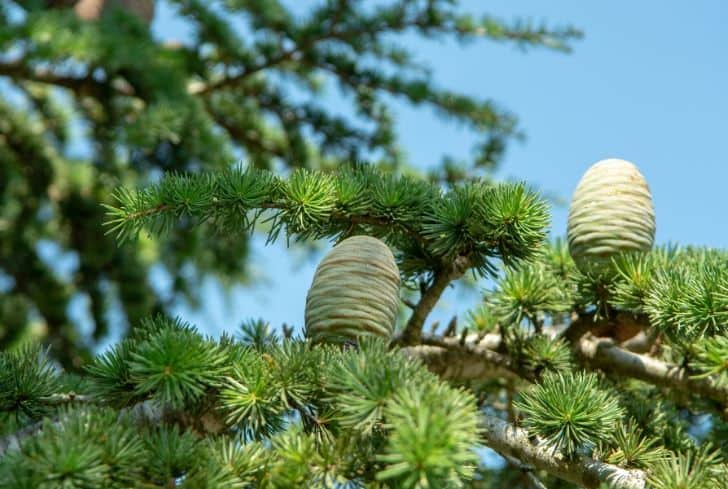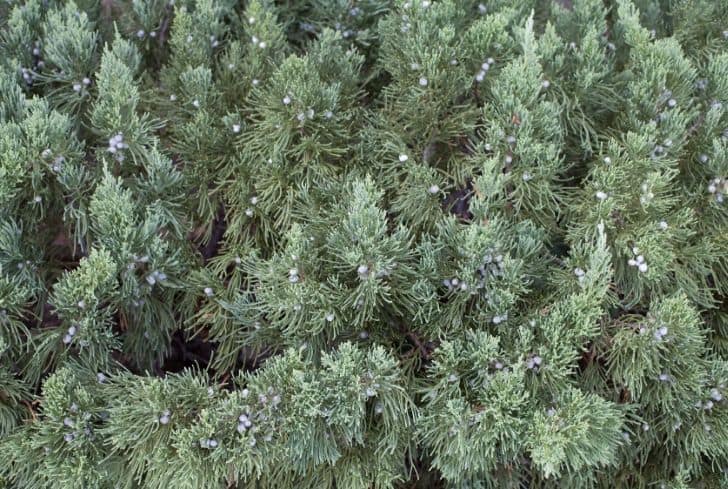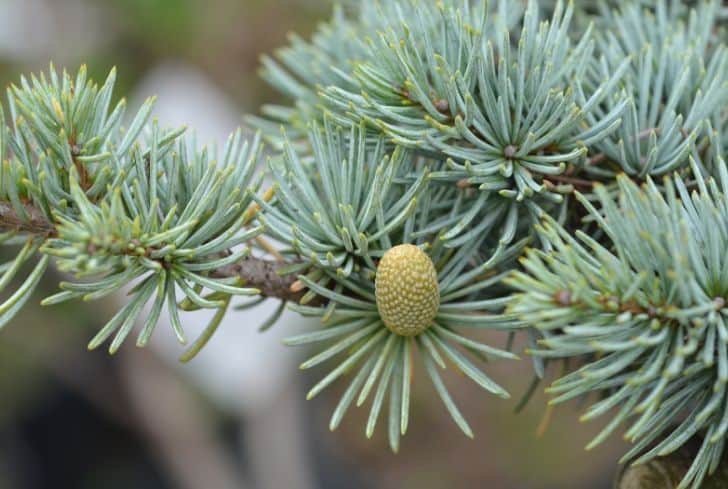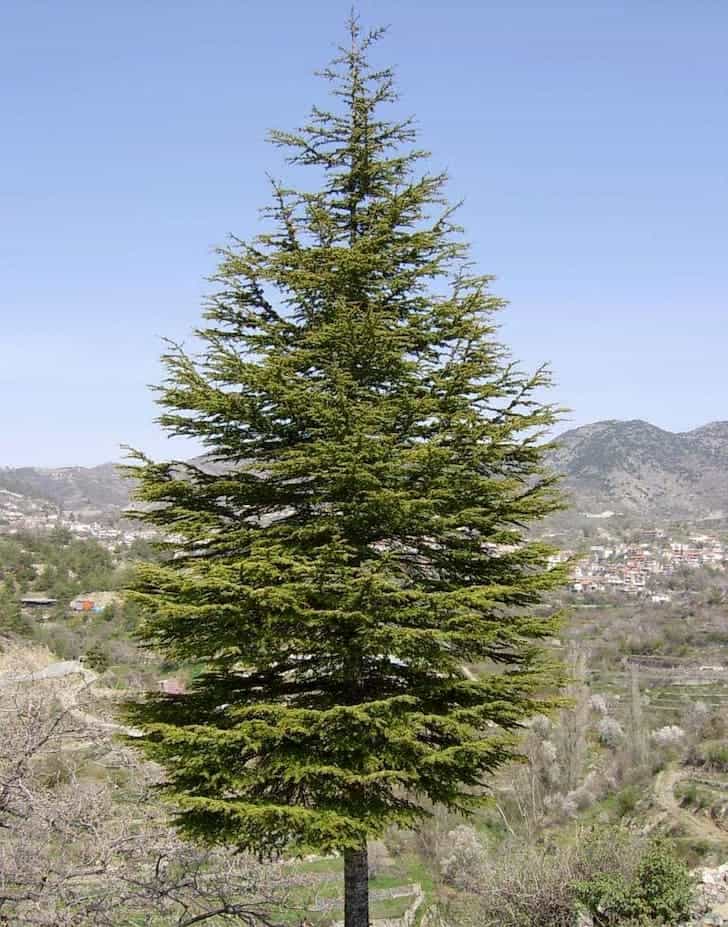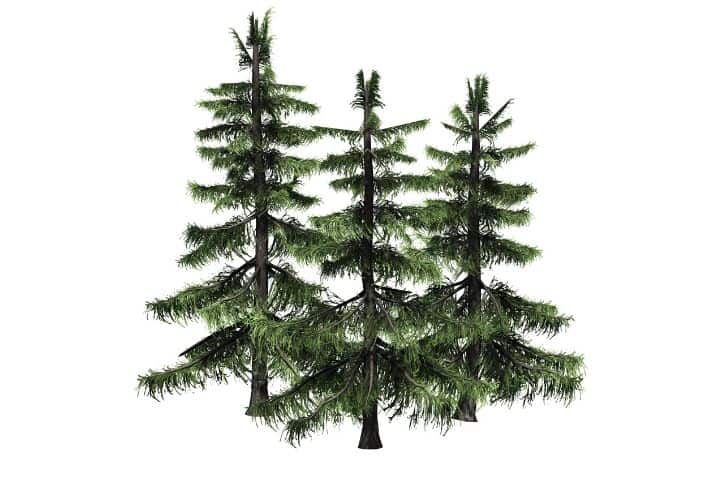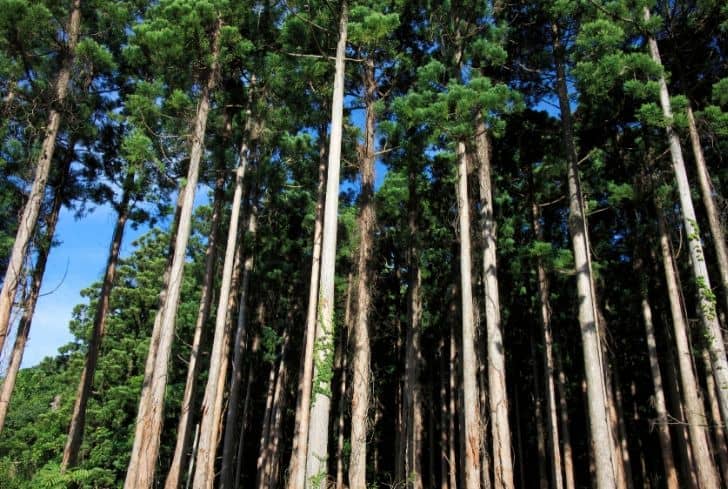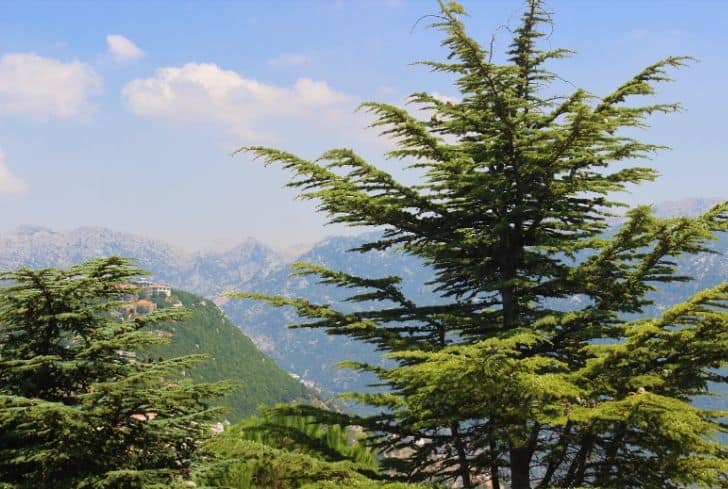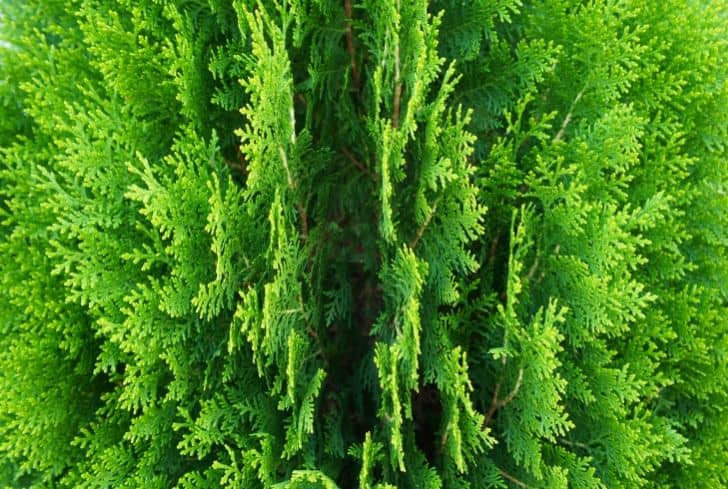Native to the Himalayan region, the Cedar tree grows abundantly in the Mediterranean and several other parts of the globe with mild to moderate climates. Cedars are evergreen, with leaves growing throughout the year, and their defining quality lies in the strong and intense scent of the leaves.
But did you know that cedar trees can be categorized into multiple types?
For instance, true cedar has four broader types, while faux cedar has as many as three different types.
In this article, we will discuss these types in detail, shedding light on the 17 most popular Cedar tree types.
Different Types of Cedar Trees
Some of the common types of cedar trees include:
1. Deodar Cedar
With the scientific name Cedrus Deodara, the Deodar Cedar is one of those coniferous plants that is best known for its ‘weeping’ habits. Their name derives from the Sanskrit word devadaru which translates as ‘timber of gods’.
The Deodar Cedar trees are commonly found in parks, gardens, and other open spaces. Thanks to their beautiful leaves, they can deck up any place beautifully.
This type of Cedar is also the national tree of certain countries and has managed to bag the Award of Garden Merit from the iconic Royal Horticultural Society.
These trees can be identified by their striking physical attributes. For instance, they exhibit long, coniferous needles (ranging between one and two inches) and are available in deep blue and greenish colors.
As with many other variants of Cedar, these plants require maximum exposure to the sun and thrive best in moist and sandy soils. The Deodar Cedar Trees can assume a height of 40 to 50 feet.
2. Eastern Red Cedar
Scientifically termed Juniperus Virginiana, the Eastern Cedar is a part of the Cypress family. This species of plant is primarily grown in the Eastern regions of the United States and can reach a height of 20 to 40 feet.
The Eastern Cedar is widely touted as the ‘Aromatic Cedar’ because of its intense, woody smell. The same wood also creates a range of organic oils that may be used for lining closets and moderately sized drawers to prevent the infestation of insects.
The Eastern Red Cedar produces the most versatile and durable wood variants primarily used in making furniture, floors, and siding walls.
3. Western Red Cedar
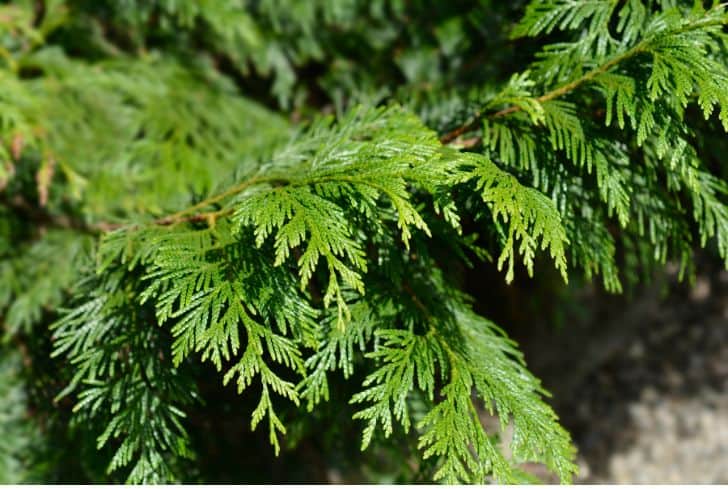
The Western Red Cedar is perhaps best defined as a Cypress tree. It is abundantly found in the Northwestern parts of the United States and Canada. It belongs to the Cupressaceae family of Cedars and is often touted as the Pacific Cedar.
These Cedar trees are incredibly large and can assume a size of up to 200 ft or higher. They also last for years; in certain instances, the Western Red Cedar trees have survived for over 1,000 years.
The tree features dense green foliage, and when you crush the leaves with your fingers, you’ll notice a subtle yet distinctive odor similar to that of the pineapple.
Being decay and pest-resistant, the wood of the Western Red Cedar Tree is primarily used during outdoor construction. Some common applications include fences, decks, sidings, and smaller sheds.
4. Atlas Cedar
Alternatively termed as the Cedrus Atlantica, the Atlas Cedars are a bunch of tall and coniferous trees that can assume a lofty height of around 40 to 60 feet. These trees also have a striking trunk diameter ranging from five to six feet.
These cedars are abundantly found in the Moroccan Atlas Mountains, where they witness slow to moderate growth. They also have a striking pyramid-like structure whereby their silhouette is large and open. For proper and consistent growth, these trees require full or at least partial shade.
They generally thrive well in moist and well-watered soil and can comfortably sustain drought or harsh winds. These trees, however, are more likely to be affected by pests. That is why you should occasionally spray them with pesticides to avoid infestation.
For extra care, you need to fertilize them with formulations that will effectively boost their growth. Consider trimming the trees when they are young to proper and even growth. This will also prevent heavy leaf shedding during intense snowfalls.
And since these trees grow best in large areas, ensure you have ample space in the area where the Atlas cedar is growing.
5. Cyprian Cedar
This is probably one of the unique species of Cedar. As evident from the name, they primarily grow in the mountainous regions covering Cyprus, Turkey, and certain parts of Syria.
Often touted as the Yellow Cedar, the Cyprian Cedar is popular for its tiny leaves and the umbrella-esque crown.
In certain instances, the Cyprian Cedar may be compared with the Cedar of Lebanon species due to their many similarities. That said, both these trees have varying physical attributes.
For instance, while the Cyprian Cedar has small, rounded leaves, the Cedar of Lebanon has more elongated leaves. Either way, the Cyprian Cedar is an excellent species of Cedar and it requires plenty of space for optimal growth.
6. Northern White Cedar
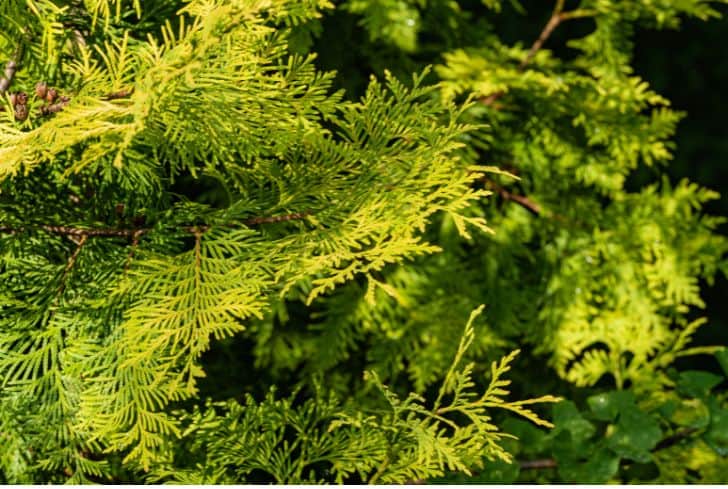
Often termed the ‘Arbor Vitae’, which translates to the Tree of Life, the Northern White Cedar is abundantly available in the Southeastern parts of Canada and the Northern and Northeastern parts of the US. The wood or logs from this cedar form are significantly lighter than Red Cedar’s.
This is also one of the many reasons it is so incredibly simple to work with this variant of Cedar Tree. Its lightweight structure makes its wood fragile and can be comfortably cut without requiring powerful tools like cutters or even backer boards. As with Western Cedar, it creates beautiful and stunning furniture.
The Northern White Cedar Plant can be identified by its thin, creamy sapwood that covers the light brown inner area of the wood. It is both beautiful and hardy. As with many other species of cedar trees, the Northern White Cedar can withstand every kind of infestation from pests.
Plus, it’s decay-free, meaning this wood is a top choice for outdoor construction like posts, decking, and similar structures.
7. Alaska Cedar
Popularly termed the Yellow Cedar, the Alaska Cedar is abundantly available in the Pacific Northwest Regions. It stretches from the Pacific Northwest to Alaska and up to British Columbia. The wood from Alaska Cedar Trees is tough and dense, which is quite contrary to the kind of wood available in generic cedar trees.
The wood is best known for its striking yellow color and tightly knit rings. Note that these rings themselves bear the maximum proof of the trees’ slow growth.
The Yellow Cedar wood is abundantly used by American builders for creating light and sustainable decks, bridges, and interior panels (to name a few). This wood is also incredibly popular among famous musicians and has excellent sound quality.
The is primarily available in yellowish hues, but you might also find it in creamy variants with a dash of deep brown steak. While processing lumber, the wooden machines put immense strain on the wooden logs to create a perfect strain on them.
8. Spanish Cedar
Scientifically known as the Cedrela Oderate, the Spanish Cedar is abundantly found in the Central and South African regions. Being extremely lightweight, this tree is a wide choice among builders and wood-cutting professionals who use it for various construction operations. It’s a top choice for building windows, cabinets, tables, centerpieces, and cabinets.
You won’t easily find this type of cedar in European or US-based countries, but it’s still one of the most popular options for lining humidors. Thanks to its beautiful natural oils and resistance to moisture and pests, it continues to be a top choice among woodworkers.
The Spanish Cedar Tree features multiple straight-lined areas that are easy to cut through on machines. Its heartwood is either pink or brown but darkens to take deeper hues over time.
Generally, the Spanish cedar is a durable and versatile plant that can effectively resist insects, pests, and decay. Since it is also easy to maintain, many people consider investing in it.
9. Lebanon Cedar
Scientifically termed the Cedrus Libani, this tree is native to Lebanon and Turkey. In fact, it is also the national tree of Lebanon. Given its immense prominence, this tree has also been grown in several other parts of the world, like Syria and Afghanistan.
As with several other variants of Cedar, these trees feature elongated leaves with a pyramid-shaped structure. They can assume a height of up to a whopping 130 feet and are a true delight to look at!
The Lebanon Cedar also comes with significant historical relevance. As per multiple records, these trees were imported to Egypt during King Sherefu’s reign to create boats. At that time, several noblemen from Byblos and the Mesopotamian regions would travel to Lebanon to get these trees.
You will also find multiple references to these trees in multiple scriptures. Its beautifully fragrant wood is perhaps why the tree was often used while making buildings in Israel. It is believed that King David used Lebanon Cedar for building his palaces. Similarly, Solomon is believed to have used this tree for building his temple and palace.
10. Eastern White Cedar
This light brown soft Cedar Wood is primarily found in the Northeastern parts of the US and the Southern Parts of Canada. Like several other trees belonging to the same species, the Eastern White Cedar is known to treat asthma, a range of convulsions, and instances of miscarriage.
Unlike some cedar species, the Eastern White Cedar isn’t very dense. Therefore, this type of tree is susceptible to damage due to pests or adverse weather conditions.
11. Incense Cedar
Native to the US, the Incense Cedar is widely found in Oregon, California, and Nevada. Like several other variants of Cedar Trees, the Incense Cedar assumes a base of 15 feet and can reach up to a whopping 75 feet in height. The bark of these trees is reddish-maroon, and they also have bright green needles.
This type of Cedar derives its name from the strong scent it exudes during the warmer weather. The tree is exceptionally tough, withstands adverse weather and poor soil, and doesn’t require occasional watering.
12. Bermuda Cedar
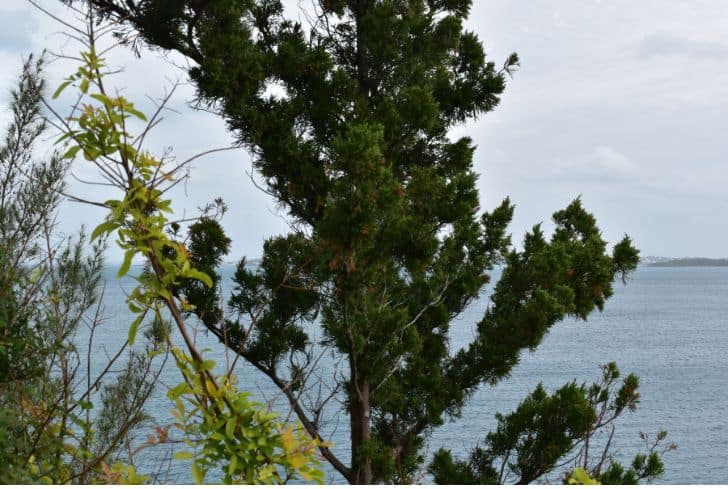
From its name, Bermuda Cedar is a juniper that is endemic to the island of Bermuda. This tree was once the most dominant tree in Bermuda and gives off the most characteristic of Bermuda. The whole island of Bermuda was once covered with Bermuda Cedar.
However, due to settlers cutting down the trees within the forest, numerous Bermuda Cedar trees were killed, as well as pollinators, causing a major destruction in the natural development of the island.
Bermuda Cedar is known for its conical shape when young and eventually becomes round with solid trunks as it grows. They are usually found in upland forests, freshwater marshes, and forested valleys, and their growth depends a lot on the type of soil they are planted in. Bermuda Cedar can grow up to 50 feet and live for several hundred years.
Its roots grow widely, spreading within the soil, which allows it to survive summer hurricanes and winter gales. This tree also has a huge trunk that can reach up to four feet in diameter and has widely spaced branches.
Both the male and female produce flowers, although they’re different in color. The male Bermuda Cedar produces pollen-filled yellow cone-like flowers, while the female ones have small flowers that become berries.
13. Port Orford Cedar
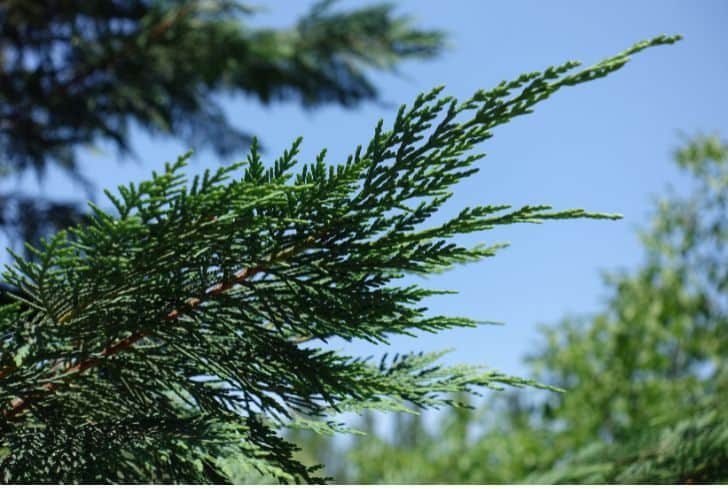
Port Orford Cedar, also known as white or Oregon Cedar, is a tree native to southwest Oregon and northwest California. This type of cedar can grow up to 200 feet tall, and their heartwood is pale yellow, while the sapwood is an almost white, yellow-brown hue. In order to grow a Port Orford cedar, the soil must be moist but well-drained with average fertility. They require full to partial shade from sunlight.
Port Orford cedar may exceed 350 years old, and this tree is recognized for its wood quality that could even survive fires and horticultural uses.
One of the largest known Port Orford cedars can be found in the Rogue National Forest located at Elk Creek southwest of Powers, Oregon, and the tree has a height of 229 feet tall and a 12-foot diameter trunk.
Port Orford cedars are used for many industrial products such as doors, hope chests, matches, flutes, arrow shafts, boats, and other wood pieces. Other than those, this tree is usually seen as a small or dwarf cultivar, being displayed indoors due to its appealing aesthetic and insect-resistant properties.
14. Aurea Cedar
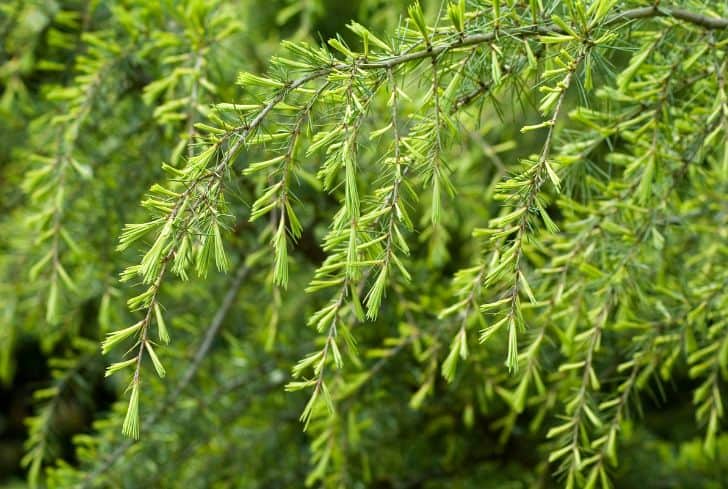
Aurea is a cultivar of deodar cedar, which is famous for its golden foliage and appealing aesthetic, leading this cultivar to be used for decorative purposes. Aurea grows with its crown, starting very low down in the trunk and maturing in a conical shape. This cultivar is mainly used in gardens as it can only grow up to 40 feet tall, has fairly dense branches, and exhibits controlled horizontal growth.
The foliage of Aurea cedar hangs softly on the branches, draping at the tips. They are usually found in clumps in different city or courtyard gardens, cottages, or other informal gardens.
In order to grow this cultivar, it must have full sun exposure, and the soil must be clay or sand-based, well-drained, have a pH of mildly alkaline to mildly acidic, and must be regularly watered.
15. Glauca Cedar
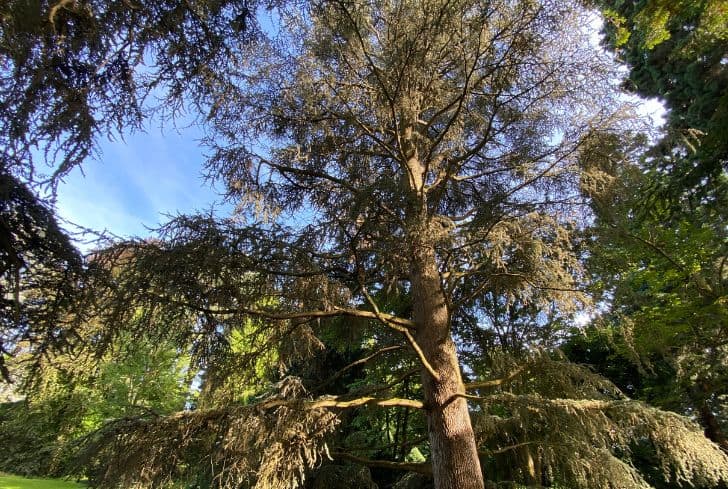
Glauca Cedar is a garden cultivar of Atlas cedar and is known for its clearly separate branches. At the early stages of its growth, Glauca cedar has long and thin trunks, with few horizontal branches on them. The isolated and visible branches are completely covered by needles, providing the barren vibe that the tree exudes.
As the plant matures, the branches and needles become thicker, resulting in a pyramidal crown. Its needles are unique for their striking silver-blue color, and this plant has a fast growth rate of 24 inches a year and can grow up to 60 feet tall. Usually, Glauca cedar is planted in informal gardens due to its color, texture, and structure.
In order to grow a Glauca cedar, it must have full sun exposure, and the soil must be loam, clay, chalk, or sand-based, well-drained, have a pH of mildly alkaline or mildly acidic, and be drought tolerant.
16. Japanese Cedar
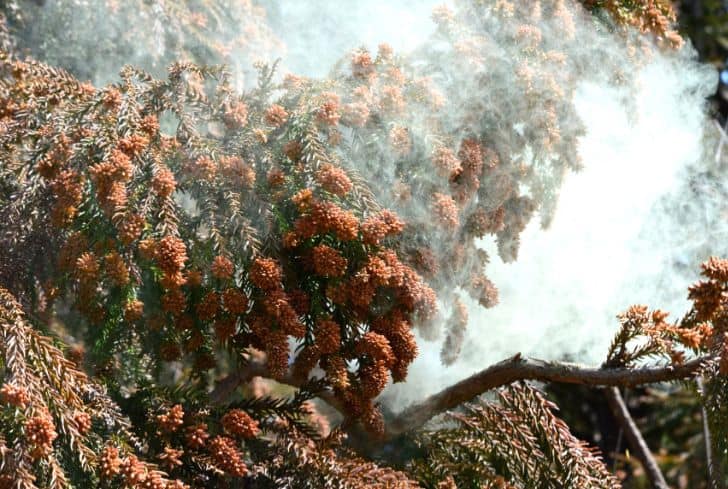
The Japanese cedar is Japan’s national tree and is native to central and southern Japan and China. This tree is a woody, needled evergreen tree that can grow up to 70 feet tall and 30 feet wide.
As the Japanese cedar matures, it forms a conical to pyramidal shape, and its branches grow to have a reddish-brown exfoliating look, providing a very appealing aesthetic to the place it is planted in.
The wood from Japanese cedar is used for many building purposes as it is resistant to damage from deer and is slightly salt tolerant. The trees are usually planted in a lawn or naturalized area due to their soft and graceful foliage. In order to grow a Japanese cedar, it must have full to partial sun exposure, and the soil must be well-drained, rich, moist, and acidic.
17. Siberian Cedar
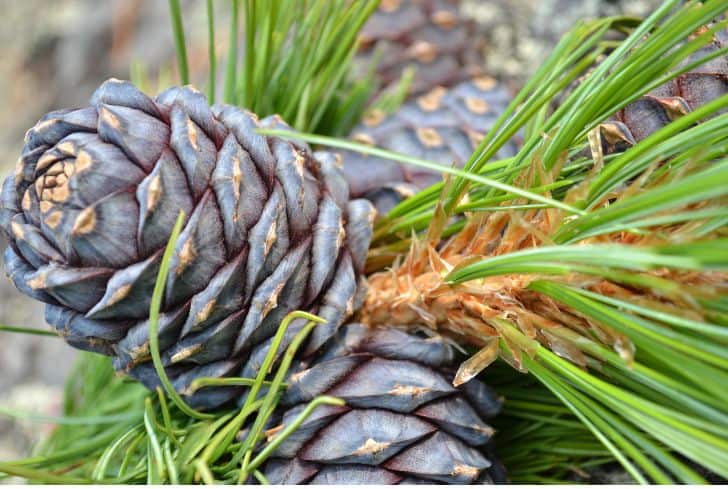
Siberian cedar is a false cedar which is very hardy and best suited to large landscapes. This cedar is native to a region spanning parts of Siberia and Mongolia, and is known for its needles that grow in bundles of five. This tree can grow up to 40 feet tall, and the diameter of the trunk can grow up to 2 feet.
As the Siberian cedar grows, its crown is sharply tapered, and as it matures, the whorled branches start to spread widely in a polyconic shape. The color of its trunks and branches is ash-silver and matures to a grey-brown color. The needles of Siberian cedar are soft, trihedral in cross-section, and dark green color with a dove-colored coating.
The male Siberian cedar grows pollen-covered spikelets, while the female Siberian cedar grows cones at the ends of the upper shoots of the tree. In order to plant this type of false cedar, it must have full sun exposure, and the soil must be moist and well-drained.
Bottom Line
Well, that was all about Cedar trees and their thirteen unique types. Each of these trees is unique and remarkable for their distinctive qualities, like the type of wood, the color of foliage, and more. Since we’ve given a brief overview of the various types of these trees, we are certain that you can now identify them according to their type and structure.
References
